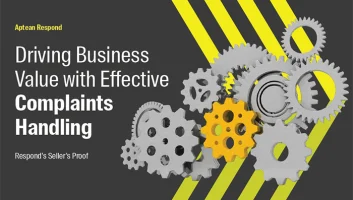How Can Technology Help Financial Services Businesses Better Manage the Entire Remediation Process?
How Can Technology Help Financial Services Businesses Better Manage the Entire Remediation Process?
How Can Technology Help Financial Services Businesses Better Manage the Entire Remediation Process?
6 Jun 2023
Eric Brown
Time-consuming and often labor-intensive, remediation can pose a real challenge for financial services business. With increasing regulatory pressure, including the introduction of Consumer Duty, a rise in customer vulnerability due in part to the current cost of living crisis, and ever-changing customer expectations in an already competitive marketplace, it would seem that we can only expect remediation to increase.
Whether it’s mandated by the Financial Conduct Authority (FCA) or a result of a self-identified breach of internal policy, perhaps driven by the FCA’s Borrowers in Financial Difficulty (BiFD) report, remediation is very much part-and-parcel of doing business in the financial services sector. And, while remediation might very well be time-consuming and labor-intensive, as we all know, a successful remediation can help to re-build much-needed trust with customers, delivering good customer outcomes as well as helping your business to learn from past failings. But that doesn’t make it any easier to carry out, with a number of specific pain points making remediation in financial services a particularly onerous task.
Frequent Remediation Pain Points
So, what makes remediation such a challenge? What are the main pain points that so many financial services businesses face?
Speed is of the essence – You’re always under pressure to mobilize, execute and wrap-up a remediation exercise as quickly as possible. Agility, dynamism and speed are required.
Who’s impacted? – It’s not always easy to readily identify the impacted cohort of customers.
Management and oversight – You might find it a challenge to precisely manage the day-to-day processes that each customer will go through, struggling to make the best use of resources as well as ensuring consistency of outcomes.
An evolving process – Remediation teams often find it difficult to apply learnings while the remediation exercise is ongoing. It’s not easy to adapt processes as the exercise evolves.
Cost and disruption – Whether done in-house by a dedicated remediation team or a swiftly-mobilized group, or even outsourced, remediation can be both costly and disruptive to everyday operations.
Remediation by Spreadsheet
Many businesses rely on spreadsheets to manage remediation. These clearly have their limitations, unable to provide the breadth and depth of functionality you need to address all of the aforementioned pain points. At the same time, concerns over data security need to be considered, as well as the inevitable data errors that occur when remediation is managed by spreadsheet. A lack of visibility and reporting also puts you on the backfoot, unable to know exactly where you are with each case at any moment in time, not to mention an inability to quickly and efficiently report back to the rest of the business precisely how the remediation process is going.
Additionally, moving away from spreadsheets can result in increased operational efficiency. Access to automation can help to control and drive key remediation processes, not only speeding-up the time it takes to carry out the remediation but helping to ensure consistency of approach and contributing towards good outcomes every time. For example, automated decisioning can fast-track resolutions without the need for lengthy investigations.
The Right Systems Can Make Remediation Easier and More Effective
The right solution can help greatly. Dedicated remediation systems like Aptean Respond can minimize the inherent risks involved in remediation, helping to provide the oversight and control that can underpin consistency of process, while delivering greater efficiency right across the remediation journey. Built-in reporting tools can provide up-to-date visibility of where you are with the remediation exercise at any moment in time, informing the rest of the business just how the remediation is progressing. This reportable insight also helps to ensure consistency of outcomes, boosting your ability to constantly monitor not only customer outcomes but customer remediation journeys too.
Switching to a dedicated remediation solution can also help you to reduce data errors, as well as enhancing your data security. And, with regulatory requirements seemingly always on the rise, the best systems are transparent and auditable, helping to provide that all-important evidence of how processes have been implemented and followed to reach specific outcomes.
Ultimately, the right technology can speed up the entire financial services remediation process, boosting operational efficiency and underpinning consistency of outcomes whilst minimizing disruption and mitigating against the risks that a remediation exercise can pose. All this means it can be a more cost-effective approach in the long-term too, helping you to get it right first time, working towards restoring customer trust and helping your business to learn valuable lessons from past failings.
For more information on how a dedicated complaint management solution can improve your remediation, helping to de-risk the entire process, making it more efficient, less disruptive and more cost-effective in the long term, contact us today.
Related Articles





Begin met de transformatie van uw klachtenbeheer
We helpen u graag als u klaar bent om uw financiële dienstverleningsbedrijf te verbeteren.



